Do you have a Calathea Ornata recently bought? Or much even better, been gifted? If so, then you’re in luck! What makes it stand out among other houseplants is the pink pinstripes that run along its leaves, also earning it the nickname “Pinstripe Plant” or “Calathea Ornata Pinstripe”. In this article, you will learn how to care for calathea ornata.
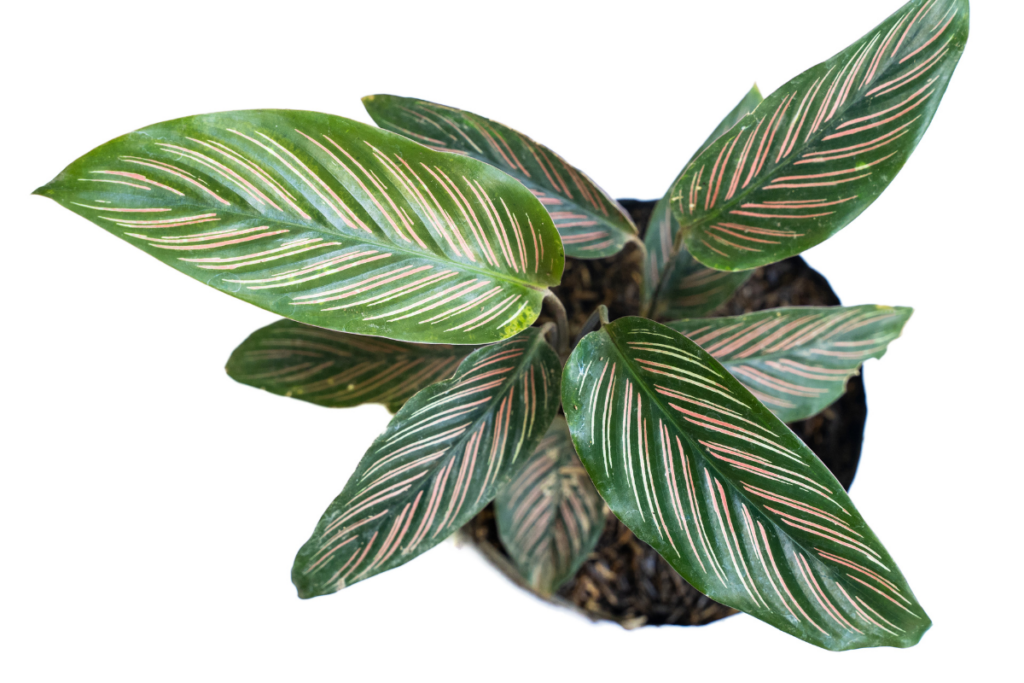
The Calathea plants make a bold and striking centerpiece of your home. If given enough love and the proper care, these prayer plants will serve you well for many years.
The Calathea Ornata is one of the most popular tropical plants in nature. These plants are native to the West Indies, Africa, Thailand, up to South America. It is highly sought after for its elliptic and vivid leaves. Oftentimes, they are also called living plants because they close their leaves at night and open them up again in the morning.
You can bring this Calathea plant to your porch or patio outdoors, but it is recommended to bring it indoors where you can be in control and be hands-on over its environmental growing conditions.
Calathea Ornata Overview
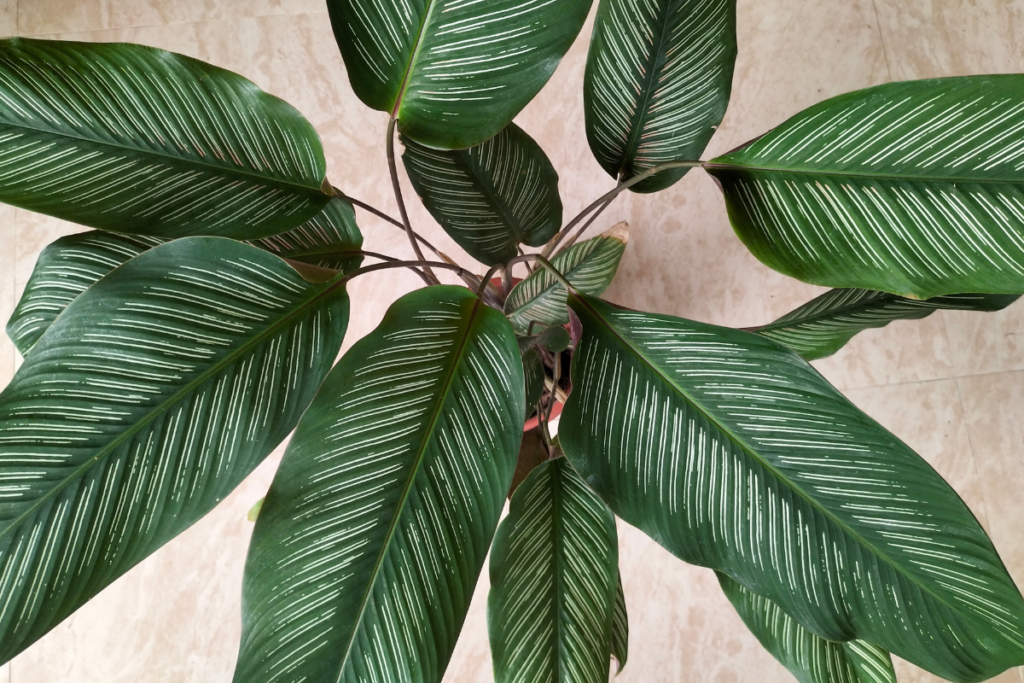
As an overview, this plant will need bright but indirect sunlight, in temperatures ranging from 65° to 85°F (18° to 29°C), and high humidity. Pot this in a peat-based soil and have a regular watering schedule that keeps the soil moist but not overwatered. Finally, fertilize monthly throughout its growing season to keep it thriving.
Despite their appearance, they are easy to take care of in the right hands. However, they may be a little bit more troublesome for beginners. Regardless of whether you are just a neophyte or a seasoned green thumb, this article hopefully gets you started in taking care of this exotic plant.
Here, we’ll answer the most common questions that many will ask regarding the care of a Calathea Ornata, how to troubleshoot common problems, and how to keep it happy and thriving. So let’s get right into it!
RELATED: What are the Causes and Solutions for Spider Plant Brown Tips?
1. How should I water my Calathea Ornata?
With most Calatheas being tropical plants, they will love humidity and moisture even more. If you are someone who tends to overwater your plants, then the Calathea Ornata is a great plant to have. However, when watering this plant, be sure to remove excess water by tilting its pot. Despite being a moisture lover, it does not like sitting in soggy soil as this will cause root rot.
Try maintaining a routine in your watering schedule for your Calathea, as it also doesn’t tolerate drought. Try striking a balance between letting the soil be barely dry in between watering but not allowing it to totally dry out.
The prolonged duration of dryness will cause the Calathea to develop brown foliage. On the other hand, prolonged periods of standing water will cause leaves to wilt. So, in the summer, water it every week or two depending on how dry the soil is, and in the winter, you can water it every two to four weeks, again depending on how dry the soil is.
Regular tap water will work well for this plant. However, certain additives in tap water can cause the leaves to brown. If this happens, there is no harm in using distilled or rainwater to rule out the chance of chemically-treated tap water that might cause the browning.
2. What is the ideal soil for my Calathea Ornata?
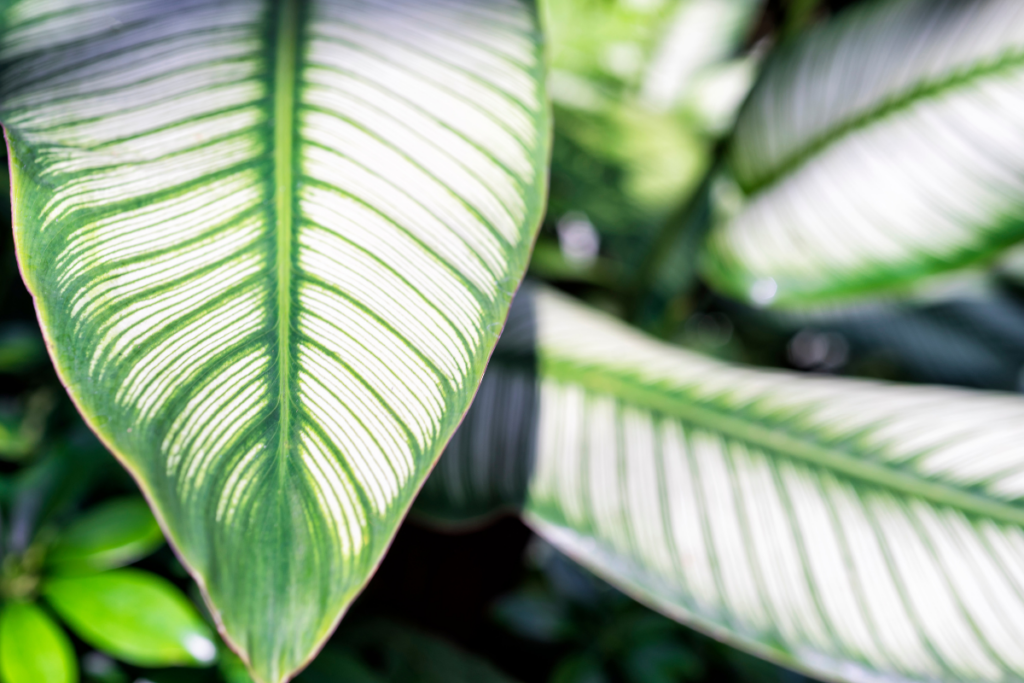
Since this prayer plant is tropical and loves moist soil, the soil you pot your Calathea in should also cater to these conditions. Therefore, soil that holds a lot of water and moisture is ideal. This way, it can sit in moist soil for longer without you sticking to a more stringent watering schedule. On the other hand, if the soil you have does not retain much moisture, then you will have to water the plant more often.
When potting, use a peat-based potting mix such as coco peat or peat moss. A good blend is two parts peat and one part perlite or pumice. The peat helps retain moisture while the perlite will help with the soil aeration.
Good potting soil that drains quickly while at the same time retaining a lot of moisture will help your Calathea develop a robust root system. However, be sure that your soil does not get compact or waterlogged, as this will suffocate your plant’s roots.
3. How much light does my Calathea Ornata need?
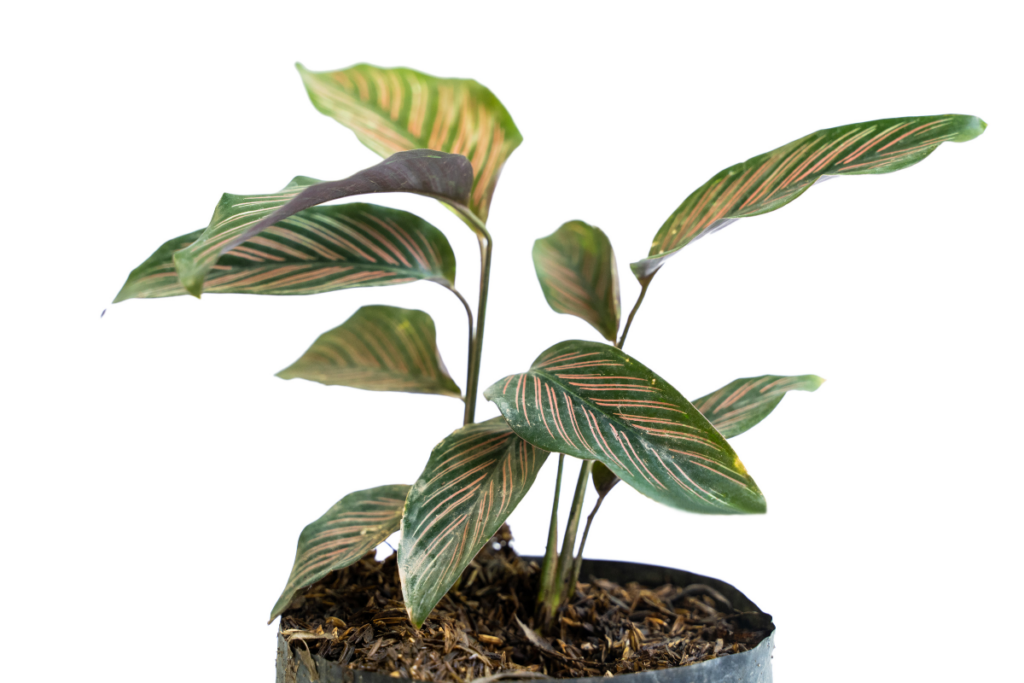
Tying back to its natural habitat, the Calathea ornata plant is tropical and is used to being shaded by larger plants. Therefore, it makes sense that their light requirement is bright, indirect light throughout the day. If there is one particular area that this plant is fussy about is its lighting conditions.
Place the plant near a window with thin curtains or shades, and that should keep your plant thriving. You can also place it in a spot in your room that receives plenty of indirect light. Too little light will cause stunted growth, but too much direct sunlight and it will scorch its tender leaves.
If you are having doubts about its lighting conditions, just regularly check on its leaves. If it starts losing its pinstripes, then it is receiving too much light.
4. Is there an ideal humidity for my Calathea Ornata?
You may be starting to pick up a pattern here; this plant is truly a tropical one as this plant thrives in humid conditions. So if you can replicate its natural habitat of a humid one, then this plant will be happier. There are plenty of ways to maintain the humidity around your plant.
First, you can group this together with your other houseplants to effectively increase transpiration for your Calathea and your other houseplants. You can also place it in a more naturally humid part of your home, such as the kitchen or bathroom.
Another is to regularly mist the plant twice a week with room temperature water. You can also place a tray with pebbles underneath your plant that you periodically add water. This will keep the roots moist without causing root rot. Finally, you can also consider placing a humidifier near your plant.
5. What is the ideal temperature for my Calathea Ornata to thrive in?
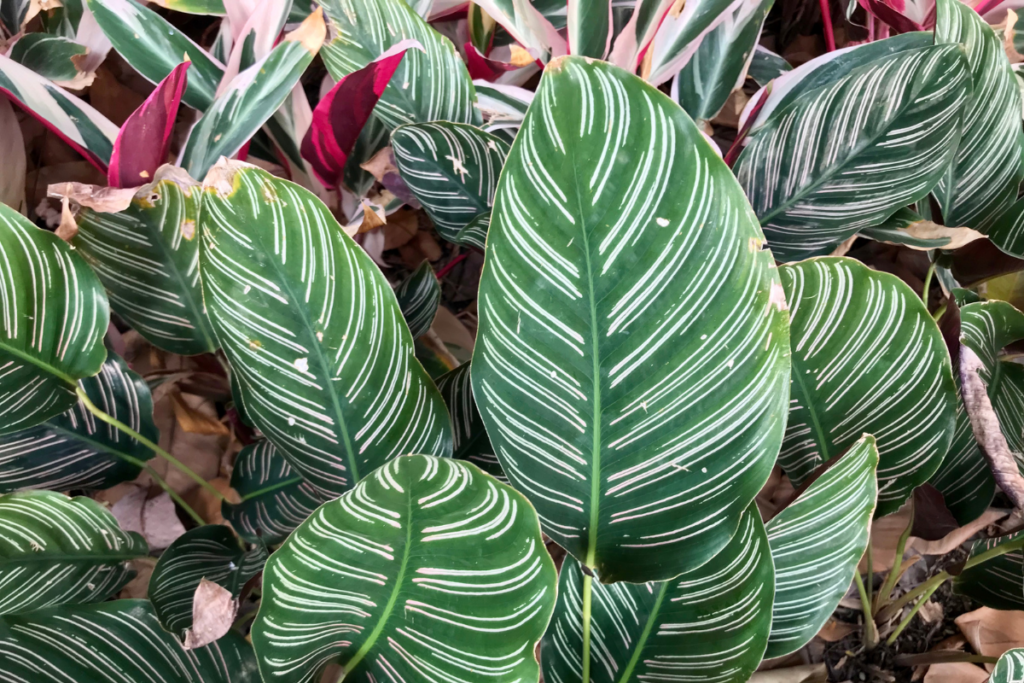
Again, since the Calathea Ornata is a tropical plant, it will also appreciate temperatures similar to tropical areas. However, remember that most houseplants, in particular tropical ones, are sensitive to sudden changes in temperature that can be brought about by cold drafts or warmer air. So keep this plant away from air conditioning units or heating elements.
With this in mind, you should pay more attention to where you place your plant.
Keeping it in a warm temperature that is hovering around 65 to 85 degrees Fahrenheit (18 to 29 degrees Celsius) is ideal. Wherever you place this plant, its habitat should not drop below 60 degrees Fahrenheit (15.5 degrees Celsius) as this plant will not tolerate colder temperatures.
So if you have this plant outside, move it to your warmer home come winter. When you first select where to place this plant, monitor it for any observable signs of changes, then adjust accordingly.
RELATED: What are the Effective Ways to Fix Nitrogen Toxicity in Houseplants?
6. Does my Calathea Ornata require fertilizer?
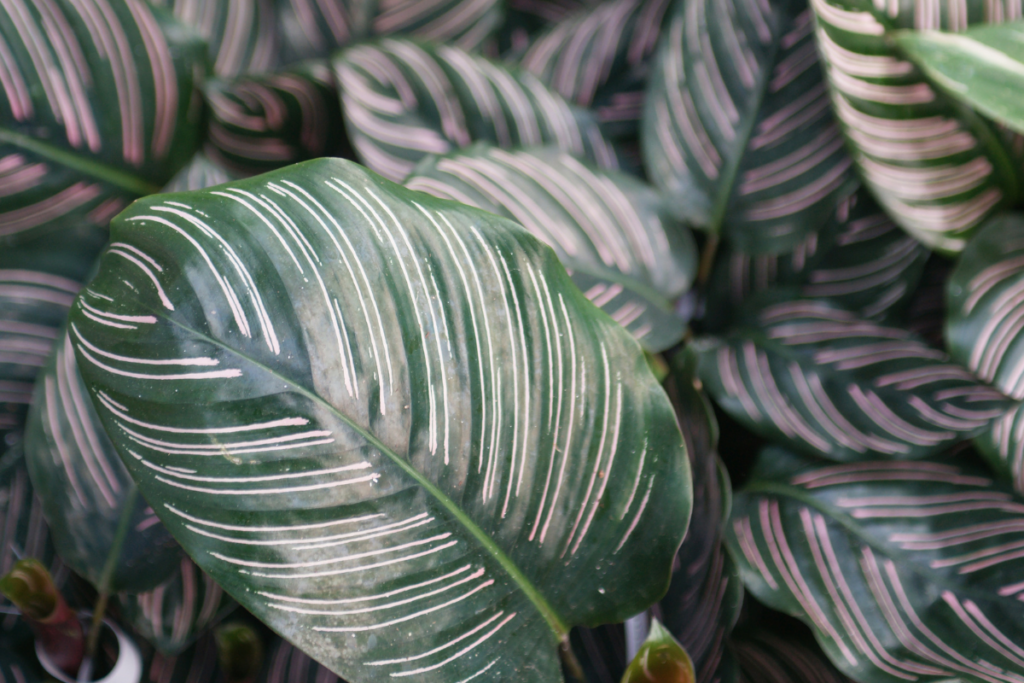
In this aspect, the Calathea Ornata is not fussy or picky about and is a relatively low-maintenance plant. However, it does still benefit from a well-rounded, general houseplant monthly fertilization, give or take.
If you are to fertilize this plant, do it in its growing season during the summer and spring as the plant will grow more. When the colder months come, you don’t need to be as strict with fertilizing as the cooler weather will slow down the plant’s growth.
Do choose a well-balanced fertilizer when you feed your Calathea plant. For example, dilute liquid fertilizers at half strength. Or better yet, use organic ones like your compost tea to see better results.
If your Calathea Ornata does not need it, especially during the winter, then fertilizer is not needed. Too much fertilizer will burn the plant and will prevent the plant from coming out of dormancy from winter. One sign of overfertilization is that the plants become tall and lanky. So be sure to feed this plant only during its growing season.
7. Will I need to regularly repot my Calathea Ornata?
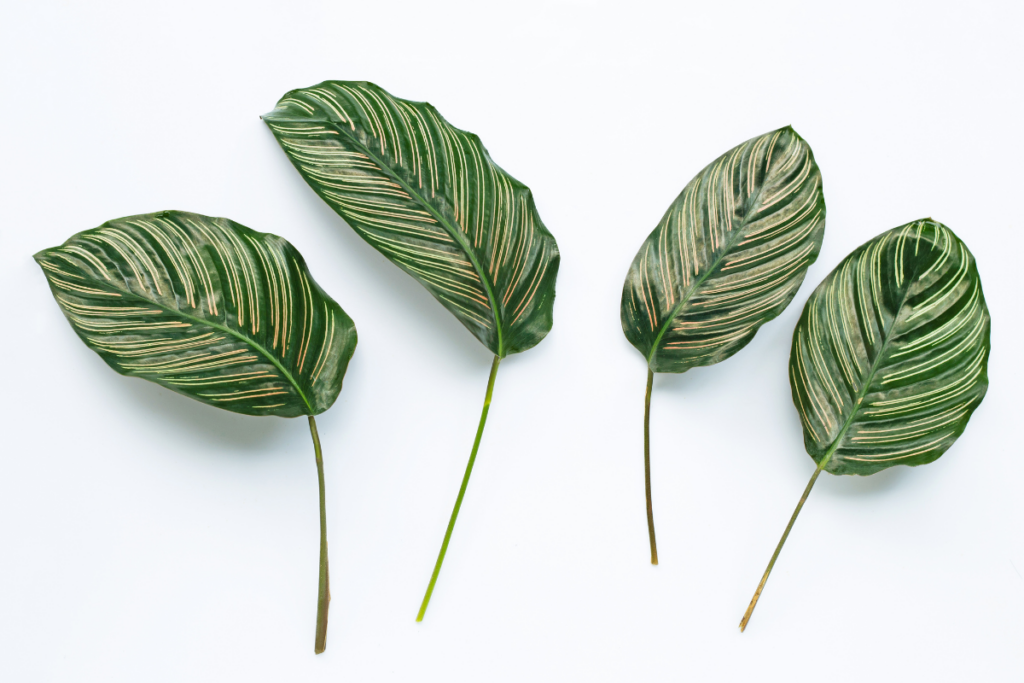
Do not repot your plant until you see roots coming out from the pot and the plant has grown considerably larger. This usually happens a year after purchasing (or receiving) your plant.
Whenever you deem that your plant needs repotting, wait for the spring, as this is the time when your plant is most likely to be actively putting out new growth. This also ensures it is weather ready to support new growth in its new pot.
If your plant is sufficiently large, you can divide it into two and repot them in appropriate-sized containers. Separate the plant into two foliage clusters and ensure each cluster has its own root system. Once moved, cover the Calathea and its pot with polythene.
Cover it until you see new growth appearing. Mist these new plants so that they can establish themselves well and grow robust root systems.
If you are not splitting the plant in two, place your plant in a larger pot that is one to two inches wider in diameter. Please do not put them in a larger pot, as a larger pot will mean more soil that can potentially hold more water for longer and thus causing root rot.
8. Does my Calathea Ornata require regular pruning? Is there anything else to maintain?

Occasionally, your Calathea ornata will develop brown leaves even in ideal growing conditions. This should not be cause for concern as this is normal. However, it is one of the signs it will show you that it may require some pruning. Grooming the plant will help maintain a better growing condition and make your plant look tidy and healthy.
It’s even more simple than it seems. All you need to be doing is prune any brown or yellow leaves with a functional pair of sterile pruning shears.
Aside from pruning, you will also want to dust off your plant to ensure better light absorption and facilitate transpiration. Simply brush the dust off the foliage using a clean moist cloth. Mist it afterward.
9. I would like more Calathea Ornata! Is there any way to propagate this plant?
Unfortunately, Calathea Ornata and most members of its species cannot be propagated through stem cutting. Instead, propagation is done through division. If you recall, we even have discussed this in the repotting section.
But to summarize, during the start of the growing season (ie. spring), divide your one large plant into two, making sure each separate plant has its own root system, and plant them in appropriately sized pots. Be sure not to overwater; each small plant will require less water as smaller plants tend to require less of it.
10. My Calathea Ornata is not thriving well. What could be the problem?
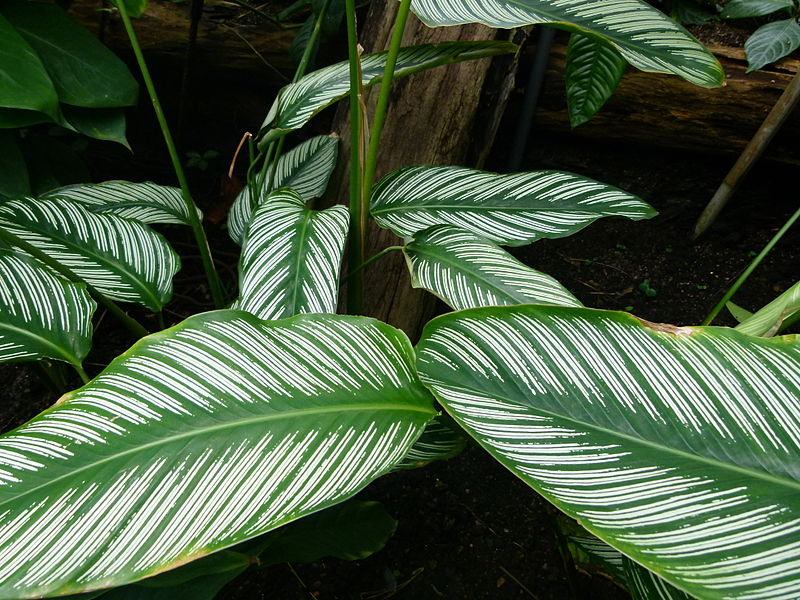
Yellow or brown leaves
Assuming that you have provided ideal thriving conditions for your Calathea Ornata, then a yellow leaf here and there is normal, so long as new growth remains vivid and lively.
If yellowing leaves are starting to be more widespread, it can be caused by overzealous watering, hard chlorinated or fluorinated water, low humidity, excessive sunlight, fertilizer burn, or pest infestation.
Diseases and pests
The Calathea Ornata is relatively hardy regarding diseases and pests, but that doesn’t mean that it is immune to them. Its common pests include spider mites, mealy bugs, scales, and aphids. Common diseases include bacterial and fungal growth.
Spider mites are by far the most common and the biggest pest you will need to be wary of, as when they appear, it is usually too late for your plant. They suck nutrients from the underside of the plant’s leaf, causing them to fall off. This will eventually kill your plant.
If you start noticing evidence of spider mites, wash the leaves with a garden hose or shower head. You can also coat your plant with neem oil, a natural pesticide, that will kill the mites when they come into contact with it.
11. Is my Calathea Ornata poisonous to pets and humans?
A lot of houseplants can be toxic to pets and young children. Fortunately, Calathea Ornata is not one of those toxic house plants. It is safe for pets and will do no harm when they get chewed on. This is a perfect house plant alternative as any accidents won’t cause you an unnecessary visit to the veterinarian or doctor.
12. Can I use tap water for my Calathea ornata?
Some other plants can be so fussy about the type of water used when watering. While most plants thrive using cheap tap water, others are so sensitive that they often die if the water used is not pure. Depending on your location, some tap waters are extremely chemically treated, hence the plant’s sensitivity to them.
With your Calathea ornata, you may skip using tap water to ensure perfect health to your plant. They can be so sensitive to the minerals and chemicals used by water treatment facilities. Tap water may be cheap, but it can do no good but harm to your plants. Better to use distilled water or filtered rainwater when watering.
If you really want your plant to stay healthy and lively, go save your rainwater. Not only do you save money from your water bills, but you also give your plants the right watering they all deserve!
13. Is Calathea ornata easy to care for?
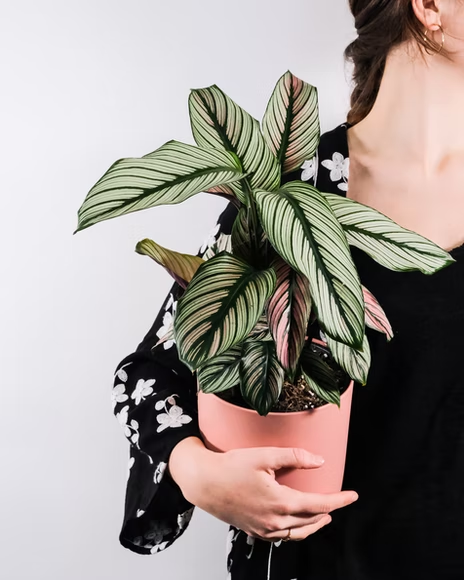
Calatheas are members of the plant family, Marantaceae. They are popular indoor flowering plants that hail from the tropics. With a wide catalog of varieties to choose from, they have a large offering of bright, premium plants to hype up all of your indoor gardens.
Your Calathea ornata, like most of your other Calatheas, are low-maintenance plants and, thus, definitely can be easy to care for. However, they can be tricky, especially for beginners. But, with the proper tips and tricks, you’ll see for yourself how simple and straightforward caring for Calathea ornata is.
Conclusion
Now you’ve come to the end of the article, and hopefully, what will be an excellent beginning with you purchasing your first Calathea Ornata! Its care can be daunting, especially to beginners with this as their first houseplant. However, if you follow most of the tips and tricks in this guide, you will be on your way to caring for this plant, or maybe even two, when the time comes!
This guide, at the most, will help you determine any problems with your Calathea and any tweaks or adjustments you can make to keep it happily thriving. At the very least, we hope we have piqued your interest enough to consider this plant as a wonderful new addition to your new home!
Editor’s Recommendations
13 Easy Cat-Safe Plants For Your Innoxious Indoor Garden
15 Best North Facing Window Plants For A Green Oasis In Shady Room
16 Best East Facing Windows Plants – The Stars Of Rising Sun







